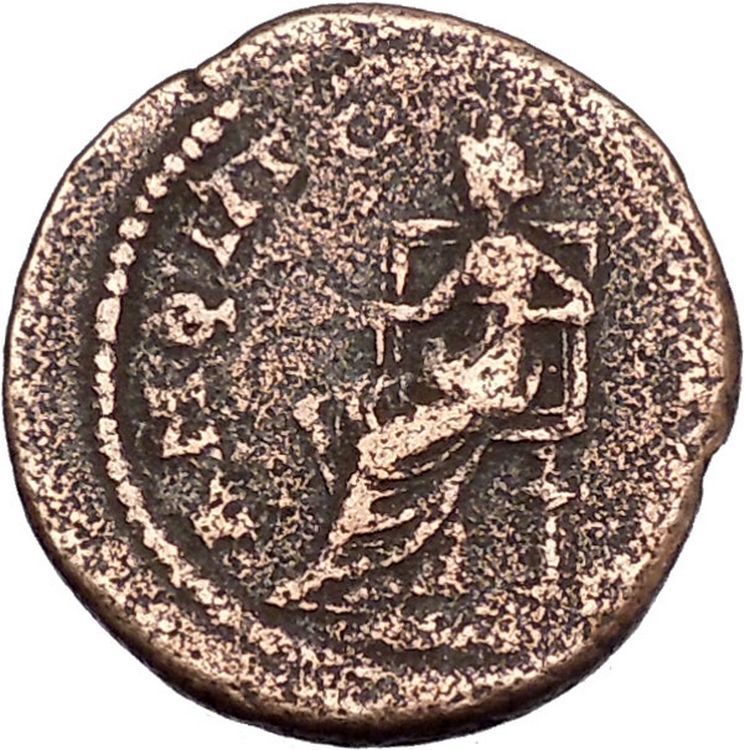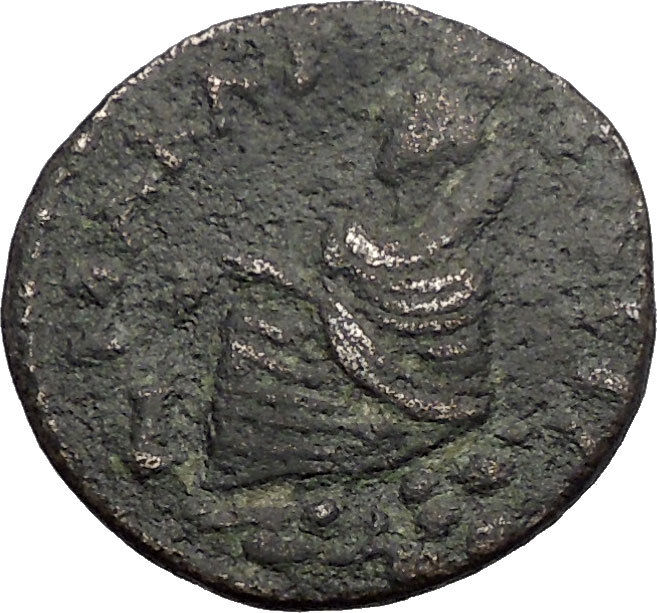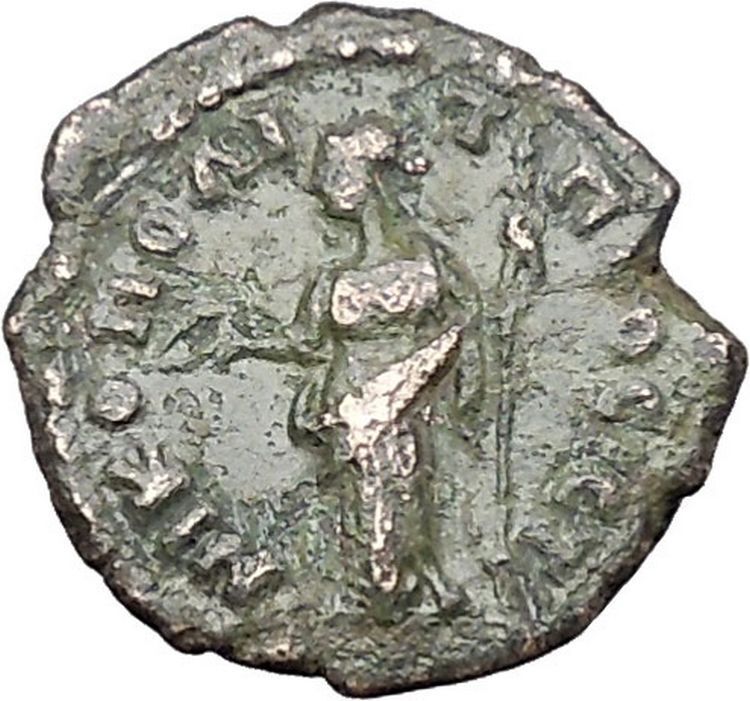|
Trebonianus Gallus – Roman Emperor : 251-253 A.D.
Bronze 25mm (7.37 grams) of Eukarpeia in Phrygia
Reference: RPC IX, 807; BMC 29
ΑΥΤ Κ Γ ΟΥ ΤΡΙΒ ΓΑΛΛΟϹ, laureate, draped and cuirassed bust of Gallus right.
EΥΚΑΡΠEΩΝ, Eucarpia seated left, holding ears of corn and long sceptre.
You are bidding on the exact item pictured, provided with a Certificate of Authenticity and Lifetime Guarantee of Authenticity.
Eucarpia or Eukarpia ) was a city in Phrygia and a bishopric in the late Roman province of Phrygia Salutaris, in Asia Minor. Eukarpia, mentioned by Strabo (XII, 576) and several other geographers, was situated not far from the sources of the Maeander River, on a road from Dorylaeum to Eumeneia, between the Dorylaeum-Acmonia and Dorylaeum-Synnada roads, probably at the modern Emirhissar, in Afyonkarahisar Province.
It was situated in a very fertile district, to which it is said to have been indebted for its name. The vine especially grew there very luxuriously.
Imposing ruins, seen by Hamilton in 1837, have almost disappeared. Little is known about the history of the city. Under Roman dominion, Eucarpia belonged to the conventus of Synnada, to the southwest of which city it was situated. It struck its own coins from the time of Augustus until the reign of Volusianus.
 Gaius Vibius Trebonianus Gallus (206 – August, 253), was Roman Emperor from 251 to 253, in a joint rule with his son Volusianus. Gaius Vibius Trebonianus Gallus (206 – August, 253), was Roman Emperor from 251 to 253, in a joint rule with his son Volusianus.
Gallus was born in Italy, in a family with respected ancestry of Etruscan senatorial background. He had two children in his marriage with Afinia Gemina Baebiana: Gaius Vibius Volusianus, later Emperor, and a daughter, Vibia Galla. His early career was a typical cursus honorum, with several appointments, both political and military. He was suffect consul and in 250 was nominated governor of the Roman province of Moesia Superior, an appointment that showed the confidence of emperor Trajan Decius in him. In Moesia, Gallus was a key figure in repelling the frequent invasion attacks by the Gothic tribes of the Danube and became popular with the army, catered to during his brief Imperial rule by his official image: military haircut, gladiatorial physique, intimidating stance (illustration, left).
In June 251, Decius and his co-emperor and son Herennius Etruscus died in the Battle of Abrittus, at the hands of the Goths they were supposed to punish for raids into the empire, largely owing to the failure of Gallus to attack aggressively. When the army heard the news, the soldiers proclaimed Gallus emperor, despite Hostilian, Decius’ surviving son, ascending the imperial throne in Rome. Gallus did not back down from his intention to become emperor, but accepted Hostilian as co-emperor, perhaps to avoid the damage of another civil war. While Gallus marched on Rome, an outbreak of plague struck the city and killed young Hostilian. With absolute power now in his hands, Gallus nominated his son Volusianus co-emperor.
Eager to show himself competent and gain popularity with the citizens, Gallus swiftly dealt with the epidemic, providing burial for the victims. Gallus is often accused of persecuting the Christians, but the only solid evidence of this allegation is the imprisoning of Pope Cornelius in 252.
Like his predecessors, Gallus did not have an easy reign. In the East, Persian Emperor Shapur I invaded and conquered the province of Syria, without any response from Rome. On the Danube, the Gothic tribes were once again on the loose, despite the peace treaty signed in 251. The army was not long pleased with the emperor, and when Aemilianus, governor of Moesia Superior and Pannonia, took the initiative of battle and defeated the Goths, the soldiers proclaimed him emperor. With a usurper threatening the throne, Gallus prepared for a fight. He recalled several legions and ordered reinforcements to return to Rome from the Rhine frontier. Despite these dispositions, Aemilianus marched onto Italy ready to fight for his claim. Gallus did not have the chance to face him in battle: he and Volusianus were murdered by their own troops in August 253, in Interamna (modern Terni).
|





 Gaius Vibius Trebonianus Gallus (206 – August, 253), was Roman Emperor from 251 to 253, in a joint rule with his son Volusianus.
Gaius Vibius Trebonianus Gallus (206 – August, 253), was Roman Emperor from 251 to 253, in a joint rule with his son Volusianus.




